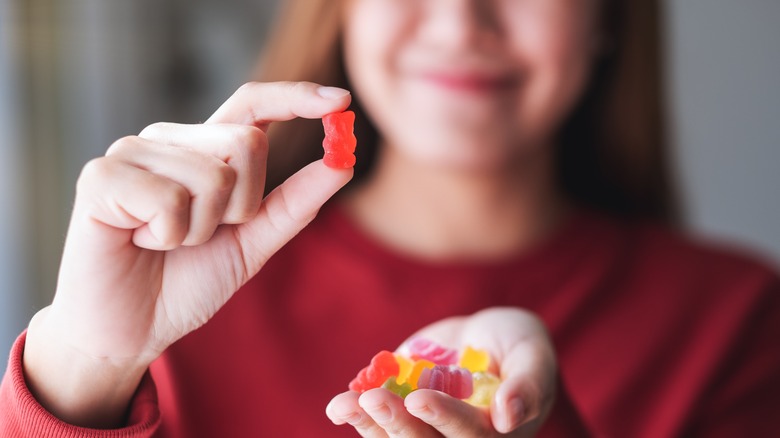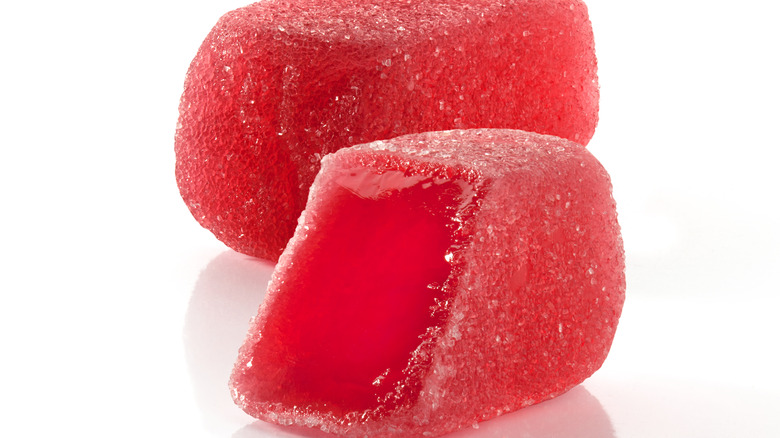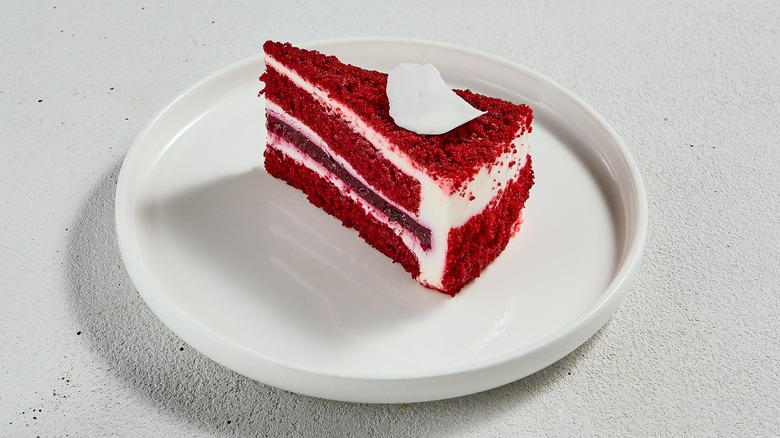Is There A Link Between Red Dye 40 And ADHD?
When it comes to dietary nutrition, you likely know that eating fruits and vegetables is better for your body than foods high in artificial sugar and saturated fat. But what you may not be aware of is that there are numerous hidden ingredients in foods that can act as triggers for various conditions like attention deficit hyperactivity disorder (ADHD). According to Healthline, certain food dyes are more likely to exacerbate hyperactivity but maintaining a knowledgeable and healthy diet can help to manage ADHD triggers and symptoms.
Food dyes are a hidden ingredient in many processed foods, medications, and other edible products (via ADDitude). Synthetic dyes can even be found in toothpaste, making the habit of reading listed ingredients of products even more imperative so that you can know exactly what you're putting into your body. In the case of synthetic dyes and ADHD, there are three specific dyes that have been repeated topics of discussion amongst experts, researchers, and medical professionals. The three dyes in question are yellow dye No. 5, red dye No. 3, and red dye No. 40. The latter of the synthetic dyes in question, red dye No. 40, has been at the center of debate and research when it comes to ADHD food triggers.
Red dye No. 40 and ADHD triggers
If you're a fan of brightly colored sports drinks or candy and have attention deficit hyperactivity disorder (ADHD) then you may find yourself in a conundrum where you have to limit your intake of foods with synthetic dyes to mediate ADHD symptoms. Medical News Today reports that red dye No. 40 has been found to be a trigger for ADHD and other neurobehavioral disorder symptoms. As one of nine color dyes that are approved by the U.S. Food and Drug Administration (FDA), it is procured primarily from petroleum. On food and beverage ingredient lists, there are eight additional names under which red dye No. 40 may be written. These pseudonyms are CI Food Red 17, Red 40, Red 40 Lake, INS No. 129, Allura Red AC, FD&C Red No. 40, FD&C Red No. 40 Aluminum Lake, and E129.
Healthline denotes red dye No. 40 as being a factor in increased ADHD symptoms predominantly in children with preexisting food sensitivities, though it has the potential to exacerbate symptoms in anyone with ADHD or other neurobehavioral conditions.
Managing ADHD symptoms by removing red dye No. 40
One way to help manage attention deficit hyperactivity disorder (ADHD) is through diet, per Medical News Today. Foods with sugar and synthetic dyes can serve as triggers for common symptoms of ADHD, which include impulsivity and interrupting other people, being unable to remain still, excessive fidgeting and movement, and struggling to maintain attention, focus, and concentration. Substances that may stimulate hyperactivity can increase these symptoms, so eliminating those triggering foods along with red dye No. 40 and other synthetic dyes from the diet of a person with ADHD can help to manage and even alleviate symptoms.
Though it's important to note that additional research is needed to discern the exact amounts and dosages of synthetic dyes a person with ADHD must consume to experience adverse effects, it's advised that people diagnosed with ADHD may want to consider erring on the side of caution by avoiding foods and other items containing yellow and red dyes, per PsychCentral. Eliminating foods with a higher amount of synthetic dyes such as soda, ice cream, candy, breakfast cereals, and various types of gelatin-based gummies can often improve ADHD symptoms.



